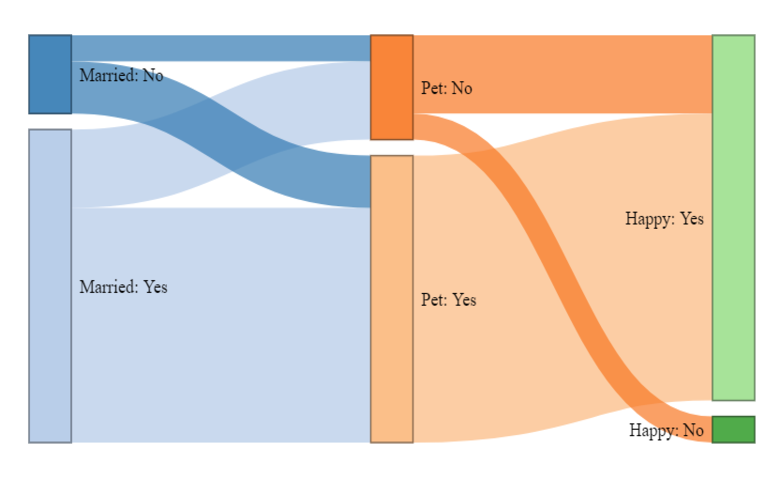Peculiarities of diagrams vary according to the type. For instance, the breadth is proportionate to the amount depicted, which is important to remember when reading and comprehending these diagrams. So, the flow of assets is depicted using a Sankey diagram; it conveys the origins and purposes of the commodities, prices, or assets depicted. Consider that the single rule (well, the main rule) of this diagram is that the breadth of the columns and lines should indicate quantities or volumes of materials. If the pointers don’t look representative, the function Object either makes an error, doesn’t comprehend the tool’s function, or attempts to hide an uncomfortable truth. So, make sure you comprehend the visualization by posing questions if anything seems strange.
Why/When They’re Outstanding
- These diagrams allow you to graphically depict complex procedures while highlighting a particular element or service. This diagram is an excellent tool when your team decides how much effort, attention, or capital to spend.
- Sankeys also have the advantage of enabling multiple visual levels. Audiences can build animated views, see individual information, or receive a high-level view. Several solutions allow you to share capability with another team member who enjoys digging deeper frequently without the developer having to perform any more effort. And the degree of profundity that will serve your objective can also be decided in advance.
- With the aid of these charts, your viewers can better see comparative amplitudes and regions with the most possibilities.
Making These Diagrams
First Step: Design
Establish your goal along with the most crucial lesson for your viewers first. As such, the following are a few inquiries you should make in advance to prevent time loss recreating your chart or creating a useless Sankey layout:
- Are you analyzing information from the researcher with this Sankey?
- Are you attempting to influence people’s opinions, convey a tale, or encourage a deliberate task?
- Who is your target market?
- How familiar is your intended audience with data visualizations?
- Which of the following will persuade your audience: return on investment (ROI), productivity, usefulness, prosperity, or comparability by region or city?
Before you begin writing any code, drawing a blueprint of how you want your visualization to look would be a good idea. So, think about the following while you draw:
- Different methods of making your argument.
- Organize similar outputs or inputs into groups in space or by color.
- The use of color signifies the transformation from one condition to the other.
- Using oversaturated colors or severity, location, size, aspect, orientation, or design, emphasize the key point for your viewers.
- Cutting little flows or placing them in “another” section will help clear the mess.
Stage 2: Code
Other Helpful Defences: The path length is an expression that takes a sequence of floats and can be used to modify the widths of the paths after they diverge from the flow path. As such, change the gap size between the outputs and inputs using the parameter trunk length.
One Word of Caution: At first, you may well not receive a visualization that closely like Sankey’s. You can become perplexed to figure out what’s happening after seeing various dimensions, labels, and figures that are certainly not what you were anticipating. But by studying the instructions, you can alter the trunk diameter, which will assist in your Sankey’s transition out of its geometrical artwork shell.
A Sankey diagram is not always the right system to use, and they are unquestionably not the fastest or cleanest visualization to produce or comprehend. However, when done effectively, they may be a great way to start a discussion. Meanwhile, just be certain you are utilizing them as it is the most effective approach to convey your information, not just to demonstrate your mastery of visualization.

